Nest: sleep smarter, live smarter
Impact
The app helps university students improve their sleep by turning routines and accountability into an engaging, energy-focused experience.
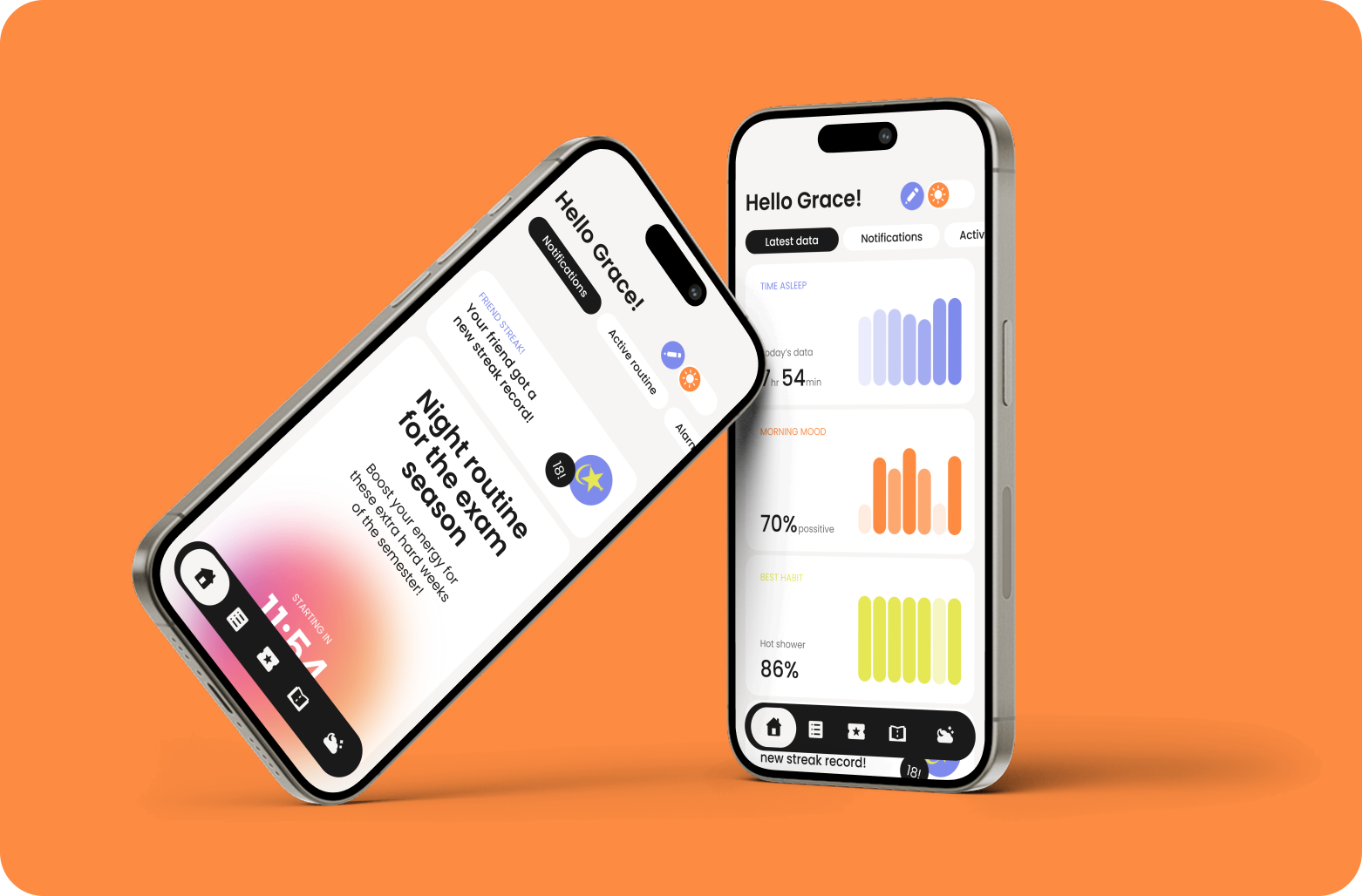
Client & Product
Nest is a mobile application designed to improve the sleep quality of university students by combining behavioral psychology, accessible education, and Gen Z–friendly design. Unlike other wellness apps that often feel clinical or overwhelming, Nest reframes sleep not as a passive activity, but as the foundation for energy, focus, and productivity. By blending social features, personalized routines, and daily check-ins, Nest helps students establish habits that last and empowers them to view sleep as a tool to perform better in every aspect of their academic and personal lives.
Background
The idea for Nest emerged from research highlighting a widespread crisis in student sleep. Surveys revealed that 81% of students identify stress as the main factor harming their rest, 72% regularly sleep less than the recommended seven hours, and 65% have never received formal sleep education. Combined with qualitative interviews, it became clear that stress, high screen time, caffeine use, and inconsistent schedules form a cycle of poor rest that negatively impacts both academic and social life. Nest was conceptualized to break this cycle by turning evidence-based sleep strategies into a playful, personalized, and social experience that would resonate with university students.
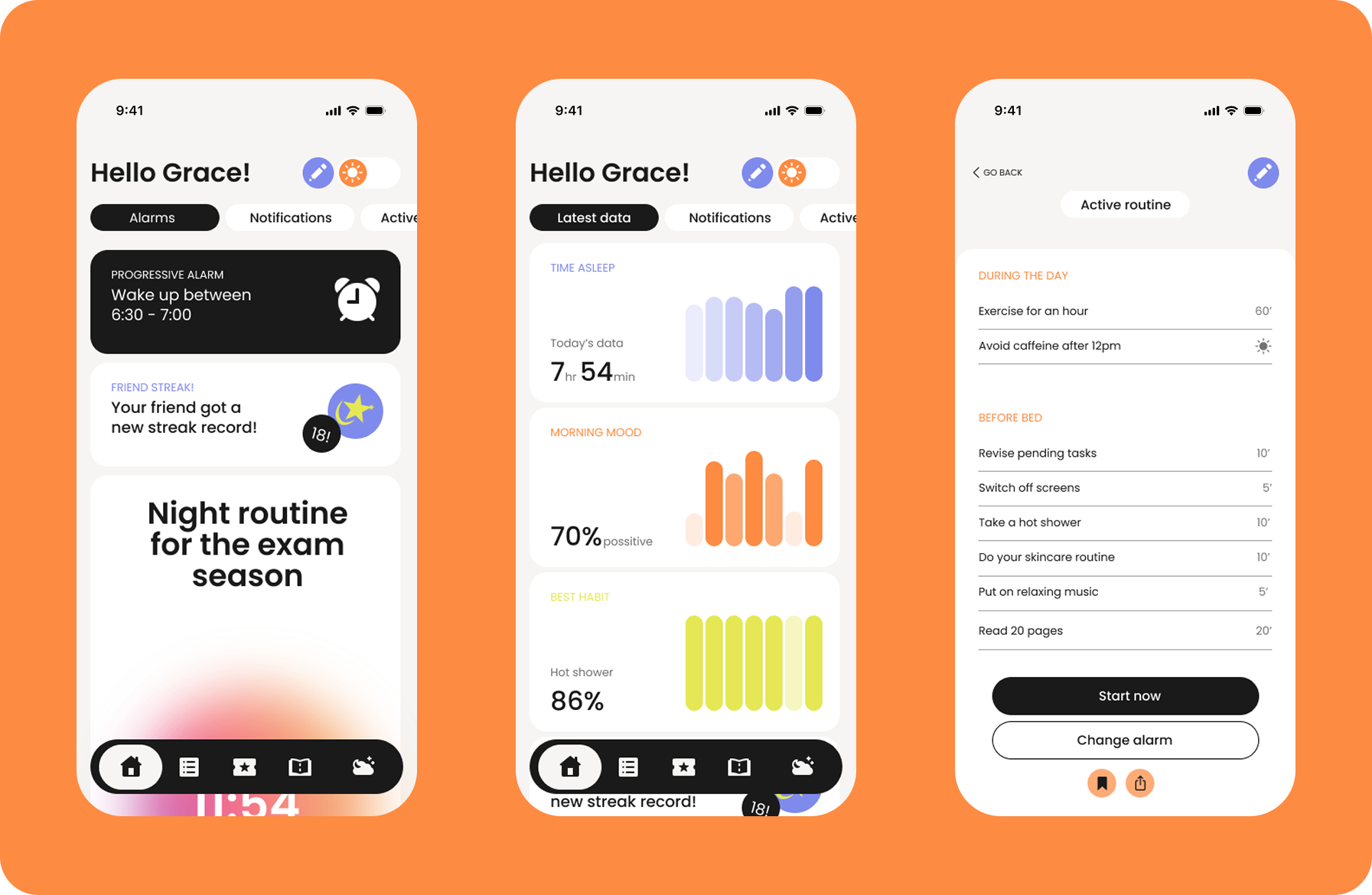
Business Requirements & Constraints
The project aimed to deliver a scalable, research-driven wellness app that helps students improve their sleep without overwhelming them. Key requirements included building personalized routines, embedding motivational mechanisms to encourage daily use, and designing a visually engaging interface tailored to Gen Z. Constraints involved ensuring the app felt approachable rather than clinical, balancing educational content with entertainment, and designing a system that could evolve with future features such as wearables or institutional partnerships.
NEST'S OBJECTIVES FOR THE PRODUCT
. Deliver customizable routines that adapt to each student’s schedule, stress levels, and goals.
. Create a scalable system that supports growth, from individual users to communities sharing routines.
. Design an approachable UX that simplifies wellness science into clear, actionable steps and reminders
NEST'S OBJECTIVES FOR THE PRODUCT
. Deliver customizable routines that adapt to each student’s schedule, stress levels, and goals.
. Create a scalable system that supports growth, from individual users to communities sharing routines.
. Design an approachable UX that simplifies wellness science into clear, actionable steps and reminders
Challenges
The main challenge was making sleep feel motivating rather than restrictive. Because the target users often reject rigid structures, Nest had to strike a balance between flexibility and consistency. Another challenge was ensuring the app worked equally well for both highly stressed students with irregular schedules and those seeking fine-tuning of existing habits.

Market UX/UI Research
A competitive analysis of existing wellness and sleep-tracking apps revealed a gap in the market. While apps like Calm and Headspace focused heavily on meditation and mindfulness, they lacked the personalized, social angle that students craved. Other sleep trackers collected data but offered little guidance on how to improve habits. Insights from user interviews reinforced the need for a solution that was approachable, fun, and practical. Students emphasized wanting something that “felt less like a medical app” and more like a lifestyle companion. These findings validated Nest's direction to combine playful Gen Z–oriented design with scientifically backed sleep strategies.
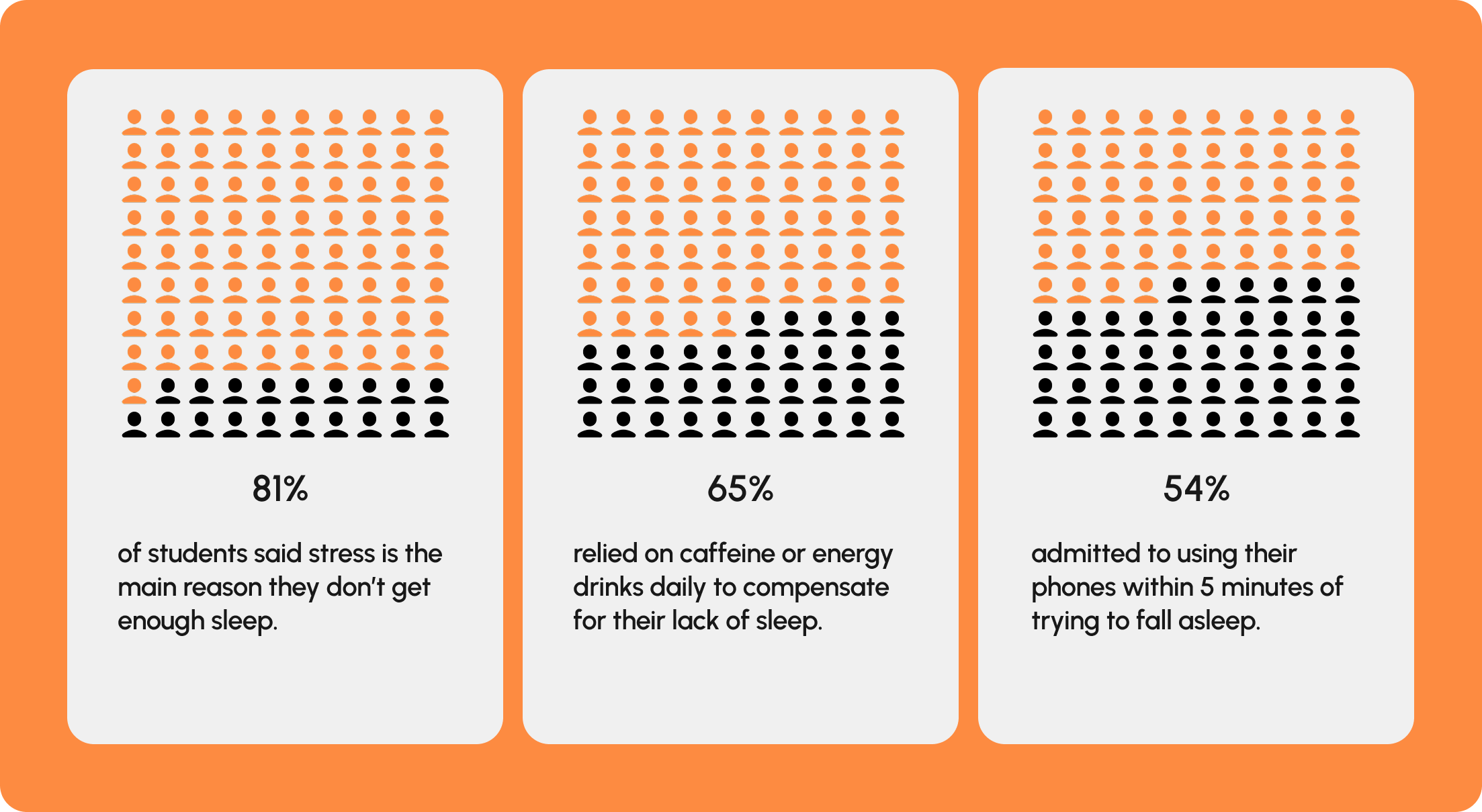
Visual Design
The app’s design focuses on bright gradients, fluid motion, and playful typography to resonate with younger users. Colors are bold but soothing, balancing the energy of Gen Z aesthetics with the calmness needed to represent sleep. The blurred orb visuals symbolize the transition from wakefulness to rest, while the clean UI ensures usability. The app shifts away from typical “health app” cold minimalism and instead embraces warmth, personality, and a touch of fun—key for engaging students who might otherwise ignore sleep advice.

Testing Hypothesis
Two core hypotheses guided usability testing. First, we believed that framing sleep around energy gain rather than simply rest would increase student motivation to adopt new routines. Second, we hypothesized that integrating daily accountability mechanisms (such as three-question check-ins) would drive consistency and reduce reliance on willpower alone. Testing confirmed both: users reported being more engaged when they could connect sleep to productivity outcomes, and daily prompts successfully prevented many from late-night phone use. Feedback also highlighted the value of personalization, with students preferring routines that matched their academic and social schedules.
Selected UX/UI Improvements
Here are some design approaches that served as the foundation for the whole system redesign:
1. DAILY QUESTION INTEGRATION
Instead of relying only on passive tracking, Nest introduced a daily three-question check-in. This simple feature gamified accountability, nudging students to reflect on their habits while generating valuable sleep data.
Instead of relying only on passive tracking, Nest introduced a daily three-question check-in. This simple feature gamified accountability, nudging students to reflect on their habits while generating valuable sleep data.
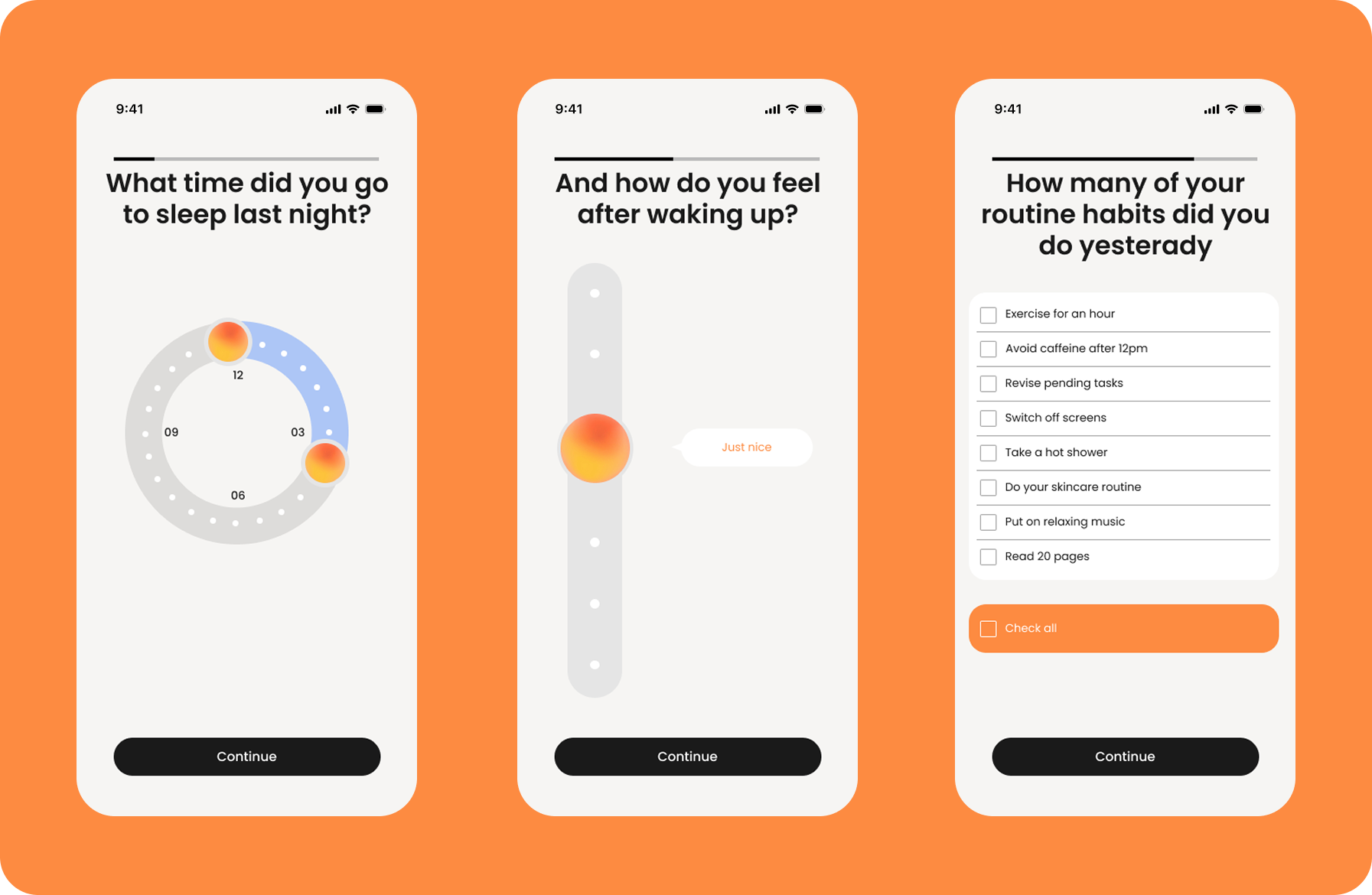
2. GEN Z VISUAL IDENTITY
Bold gradients, blurred color orbs, and playful typography created an aesthetic closer to lifestyle brands than medical apps. This design choice made the app inviting and relevant to the target audience.
Bold gradients, blurred color orbs, and playful typography created an aesthetic closer to lifestyle brands than medical apps. This design choice made the app inviting and relevant to the target audience.

3. STREAKS AND CHALLENGES
Nest integrated gamified elements like streak tracking and small challenges (e.g., “no screens 20 minutes before bed”) to reinforce consistent progress in an approachable way.
Nest integrated gamified elements like streak tracking and small challenges (e.g., “no screens 20 minutes before bed”) to reinforce consistent progress in an approachable way.
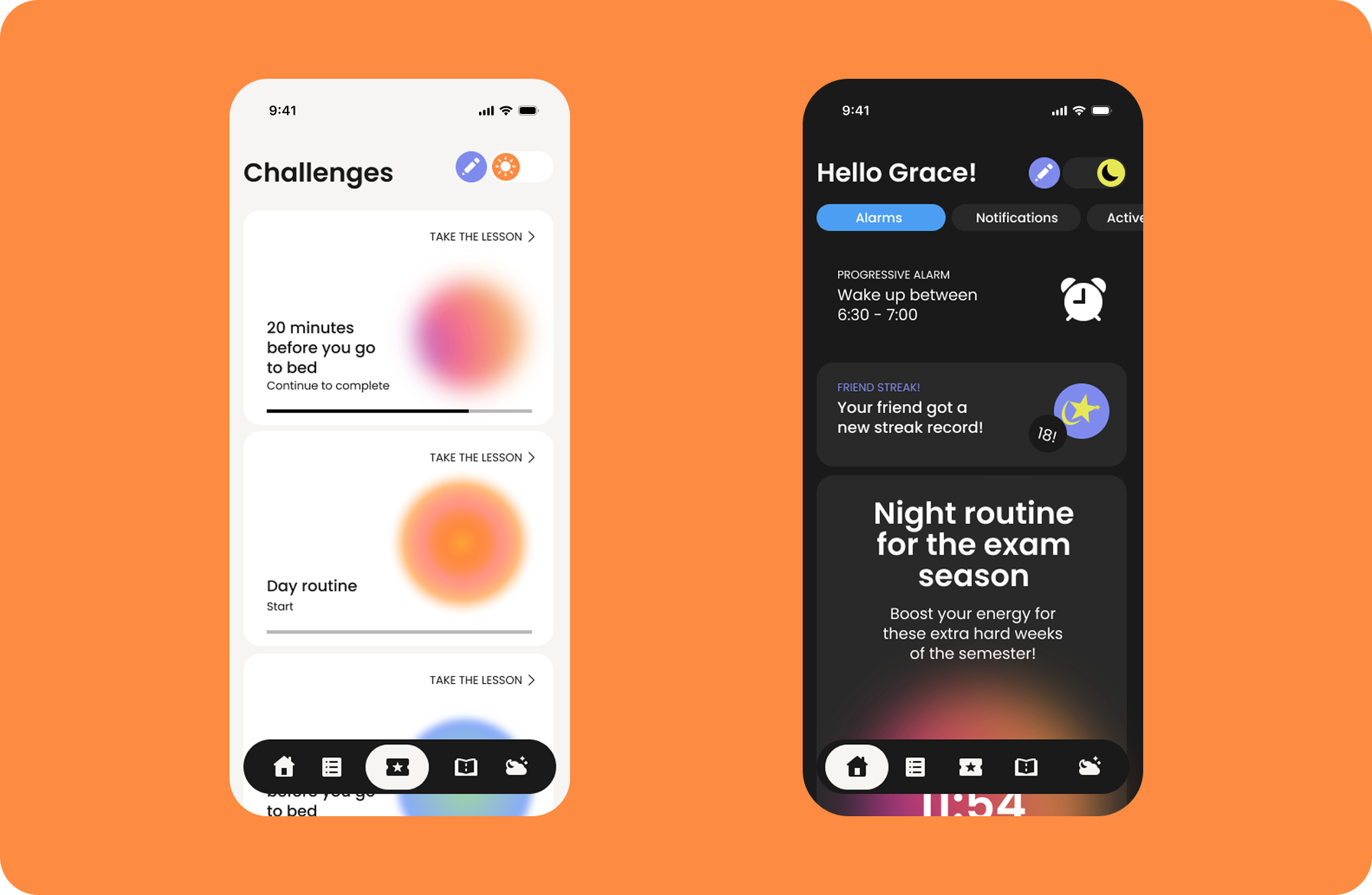
Impact
Nest demonstrated how UX design can tackle a critical but often overlooked issue among students. By translating research insights into actionable, student-friendly solutions, the app bridged the gap between awareness and practice. The prototype not only validated user interest but also opened opportunities for integration with universities, health organizations, or even wearable devices. Most importantly, it reframed sleep for students as a tool to unlock more energy, motivation, and focus—rather than as a passive task they often neglect.
Summary
Nest redefines student wellness apps by transforming sleep into an empowering, social, and engaging experience. The case study showcases the impact of design decisions rooted in both research and empathy, creating a product that is approachable, scalable, and highly relevant to its audience. By focusing on personalization, daily engagement, and Gen Z–friendly aesthetics, Nest illustrates how thoughtful UX can solve everyday challenges in ways that feel motivating and fun.
